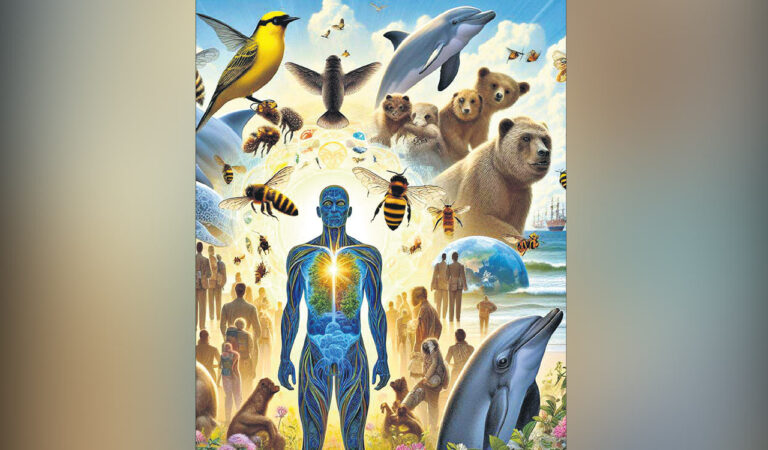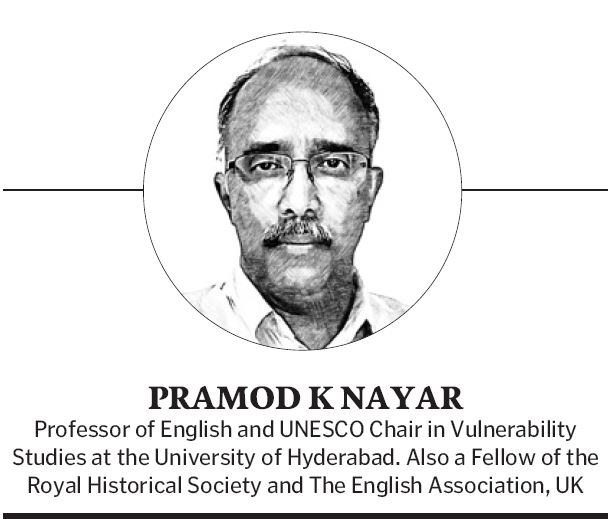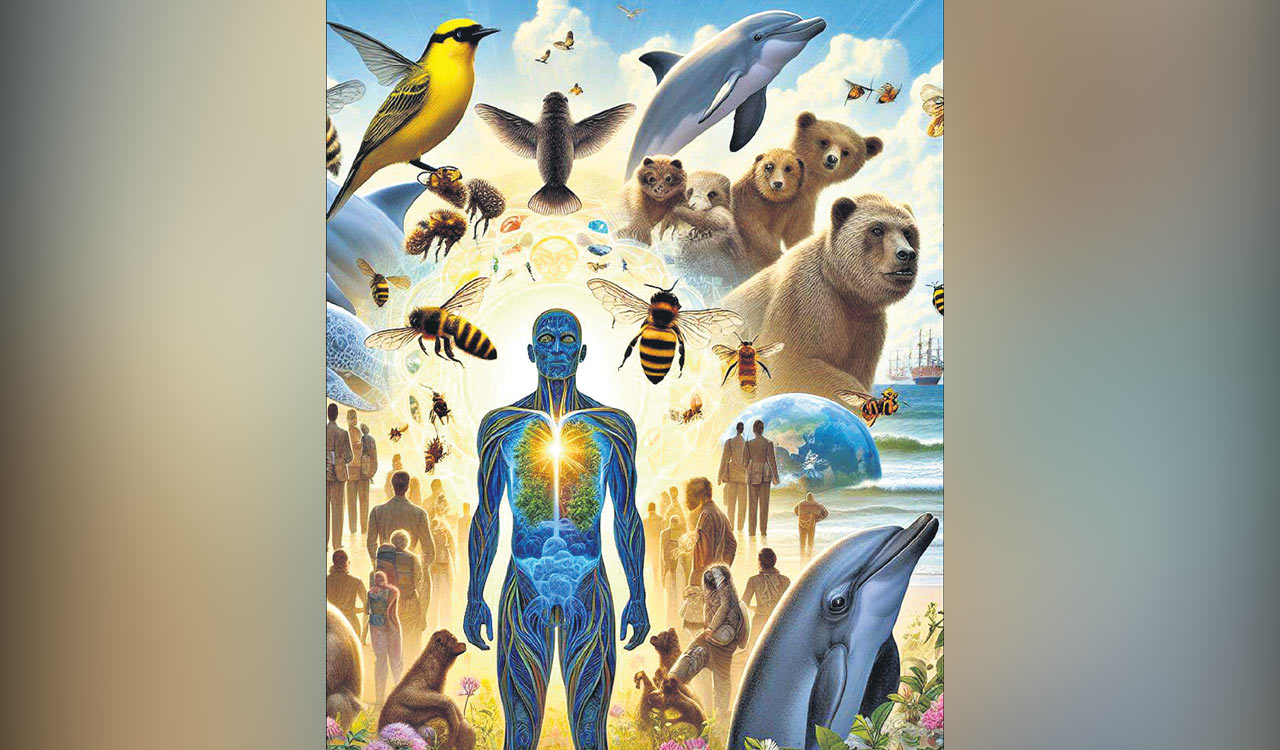
By Pramod K Nayar
Since mining developed, canaries have been sent in to check for toxins in the underground’s air before miners entered the mines. Canaries were thus ‘early warning systems’ for humanity. Humans have taken refuge, evacuated homes and guarded themselves by observing animal behaviour — behaviour which suggested an imminent disastrous event, like an earthquake.
In this context, the anthropologist Alyssa Paredes observed that
In serving as a warning signal of impending threat…sentinels also signal the existence and transcorporeality of a more-than-human collective, one that is marked as much by solidarity as by vulnerability.
That is, the nonhuman, who shares vulnerability with the human in terms of corporeal injurability, is also the humans’ sentinel. ‘Sentinel species’, as these nonhumans are called by environmental toxicologists, are lifeforms employed to measure how the environment is affected by pollution.
Human Sentinels
Intrigued by the possibility that humans could be sentinels too, the artist Sissel Marie Tonn collaborated with two scientists, Heather Leslie of the Department of Environment and Health, Vrije Universiteit Amsterdam, and Juan Garcia Vallejo of immunology and molecular cell biology, Amsterdam Medical College, to create Becoming a Sentinel Species. The project was enabled by a grant from the Dutch Bio Art & Design Award (BAD Award) 2020.
In the project, a fictional film overlaps with real-life experiments. The project focused on the possibilities of humans as sentinels. The artist’s write-up stated:
Becoming a Sentinel Species is a fictional story imagining a future in which humans explore and reflect on the role of the sentinel as an eye witness to environmental pollution.
In the film, fictional researchers inject microplastics from the sea into their blood stream and start experiencing hallucinations and odd connections of the humans with the sea. This, Tonn terms, thematises the ‘latent biological memories and hallucinations of our own watery origins in the primordial sea’. Heather Leslie states in the film about the project, ‘we are a bit of plastic too inside’, referring to the ingestion of microplastics from the environment.
Parallelly and in real life, Tonn’s blood was taken and microplastics found in everyday life introduced into it. The researchers and artists watched through the microscopes as Tonn’s macrophages — the body’s first responders to any such attack — devoured the plastic intruders.
The artist-scientist team was trying to see how the toxins in the environment upon entering the human blood stream can make the human body, a radar, a sentinel, because the human body starts behaving in certain ways — hallucinations, in the film — and, therefore, function as indexes of the state of the environment. As Leslie puts it, ‘we could also become sentinel species’.
Oceans Within Us
By employing microplastics and depicting the effects (fictionally) on the researchers, the project draws attention to oceanic origins of life.
The English and Cultural Studies scholar Astrida Neimanis in her pioneering work, Bodies of Water (2017), created the field of the ‘Blue Humanities’. Neimanis has drawn attention to the oceans — and water — within us. Neimanis writes:
[a]ttention to water’s material capacities informs a new way of thinking about subjectivity in collective rather than individualist terms.
We connect with water, in Neimanis’ posthumanist thinking.
Neimanis points to flows and entanglements as a key feature of human and nonhuman lives. However, these flows and entanglements are subject to the stresses and strains of capital, geography and power structures, as Neimanis, whose focus is also on the materiality of flows, alerts us to.
Now, with the oceans within us, Neimanis and others have noted that plastic wastes, leftover materials from the wars, rotting machinery, even footwear and fishing nets are also a part of what we are. That is, the junk in the ocean enters not just animal bodies, but human bodies as well. The waterscapes of the planet of which we are made have been transformed into toxic ecosystems by human action, and the effects are ruinous to all lifeforms.
Becoming a Sentinel Species builds on this alignment of systems of flows — water, blood — that Neimanis has scrupulously delineated, and their toxic contents.
Species Exceptionalism
Species exceptionalism has marked human behaviour over the planetary timescale. Tonn, Leslie and Vallejo show how microplastics enter and impact the human body’s immune systems (macrophages) in real-life. With this, they also show how we are linked to other species and lifeforms through a shared toxicology: microplastics enter marine lifeforms and us.
Now, while speciesism — the hierarchy between species, as created by humans, enabling humans to exploit and ‘use’ other species — and concomitant exceptionalism have rendered the other lifeforms open to greater and greater degrees of exposure, thanks to human efforts at pollution, this project asks: why should humanity not serve as indicators of toxic biomes?
When toxins invade a biome, humans and nonhumans are differentially and unequally affected. The violence upon bodies is differential, in other words. But species exceptionalism assumes that all species are affected by what humans do. Environmental toxification cannot be ‘read’ as the problem of some species. The other-than-humans have been drawn into this drama of environmental toxification due to human actions. The project, therefore, shows continuities and alignments of species within the larger crisis of environmental toxification.
One of the most startling insights from the project is that canaries, vermin, roaches, dogs and birds need not be our sentinels. That is, humans need not be exceptional to the category of ‘sentinel species’.
Becoming a Sentinel Species is brilliant art work for the Anthropocene.





